
“Although it may seem that redacted documents disallow close examinations of texts, paradoxically, they can provoke contrapuntal readings…” (Nath 23).
“This experience of reading the redacted document is not unlike what Barthes (1982) once called punctum: The unintended ways images can bruise us, puncture us, and disrupt our ways of experiencing and perceiving” (Nath, 26)
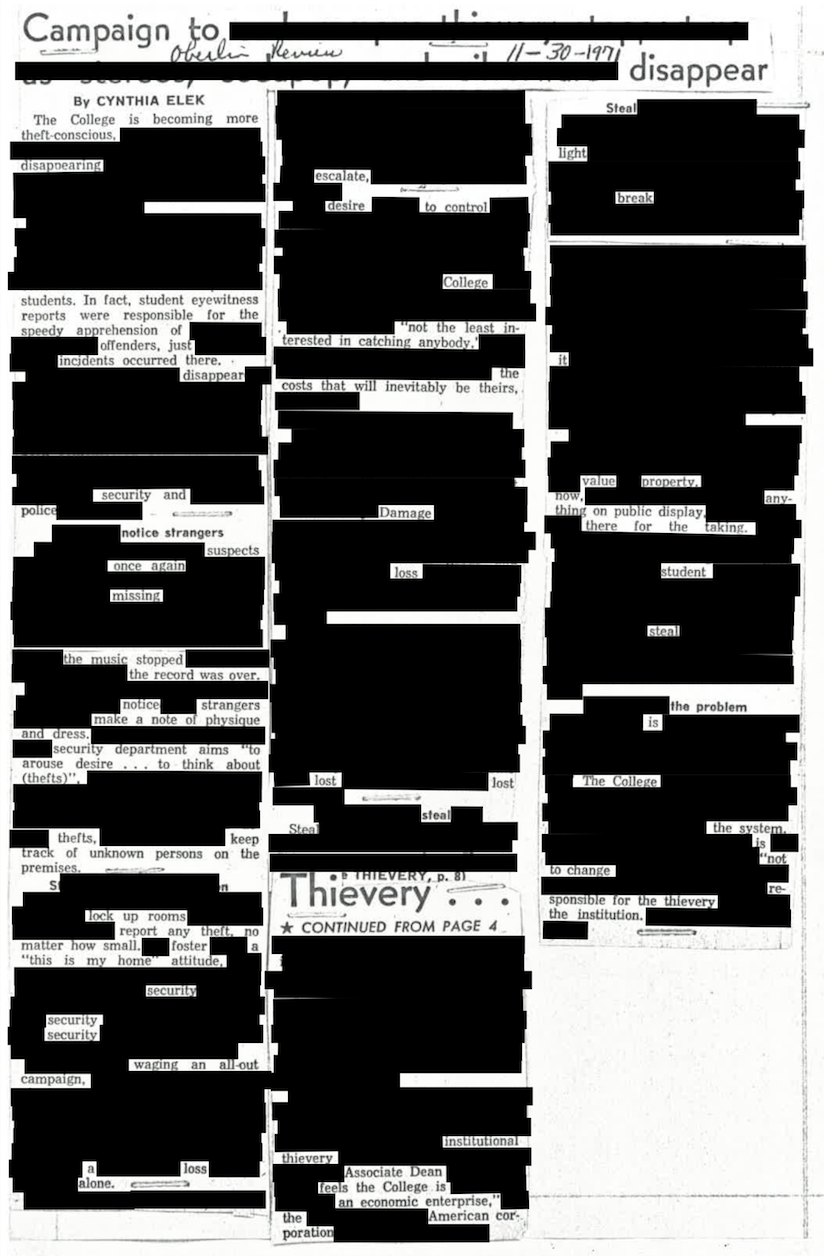
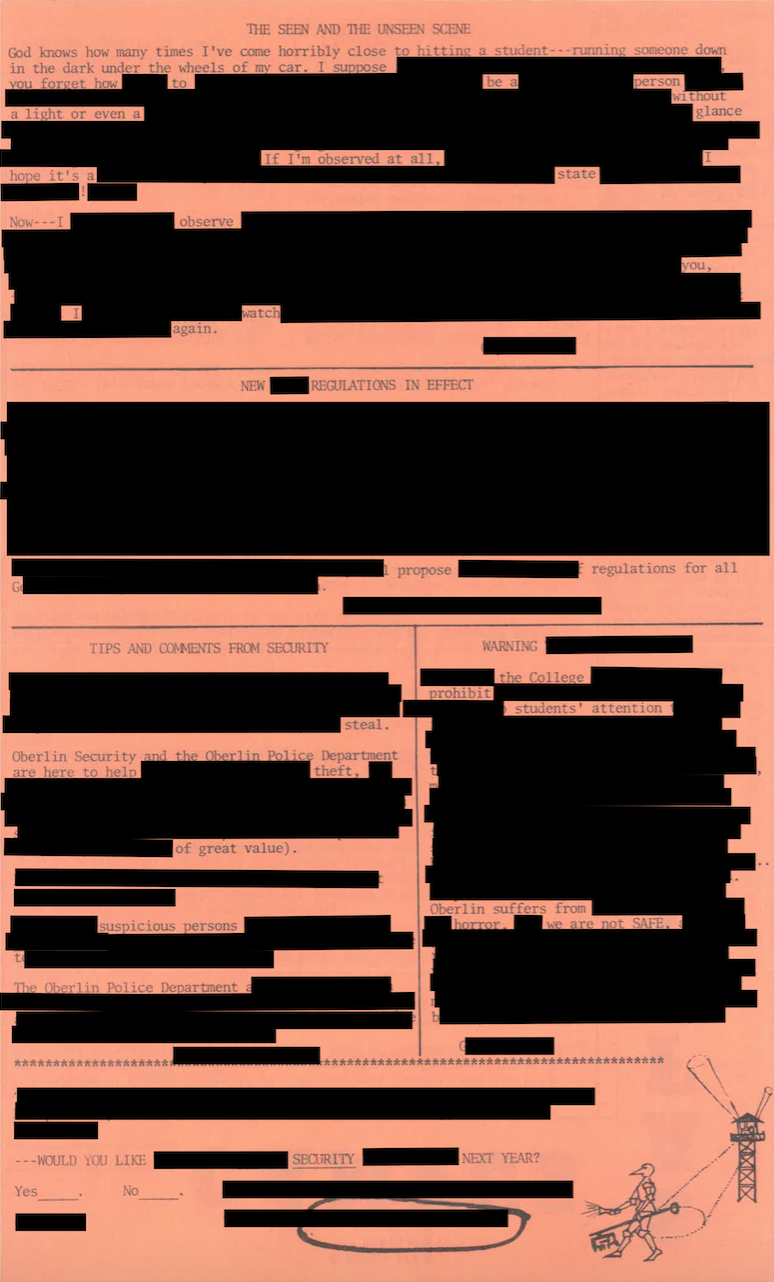
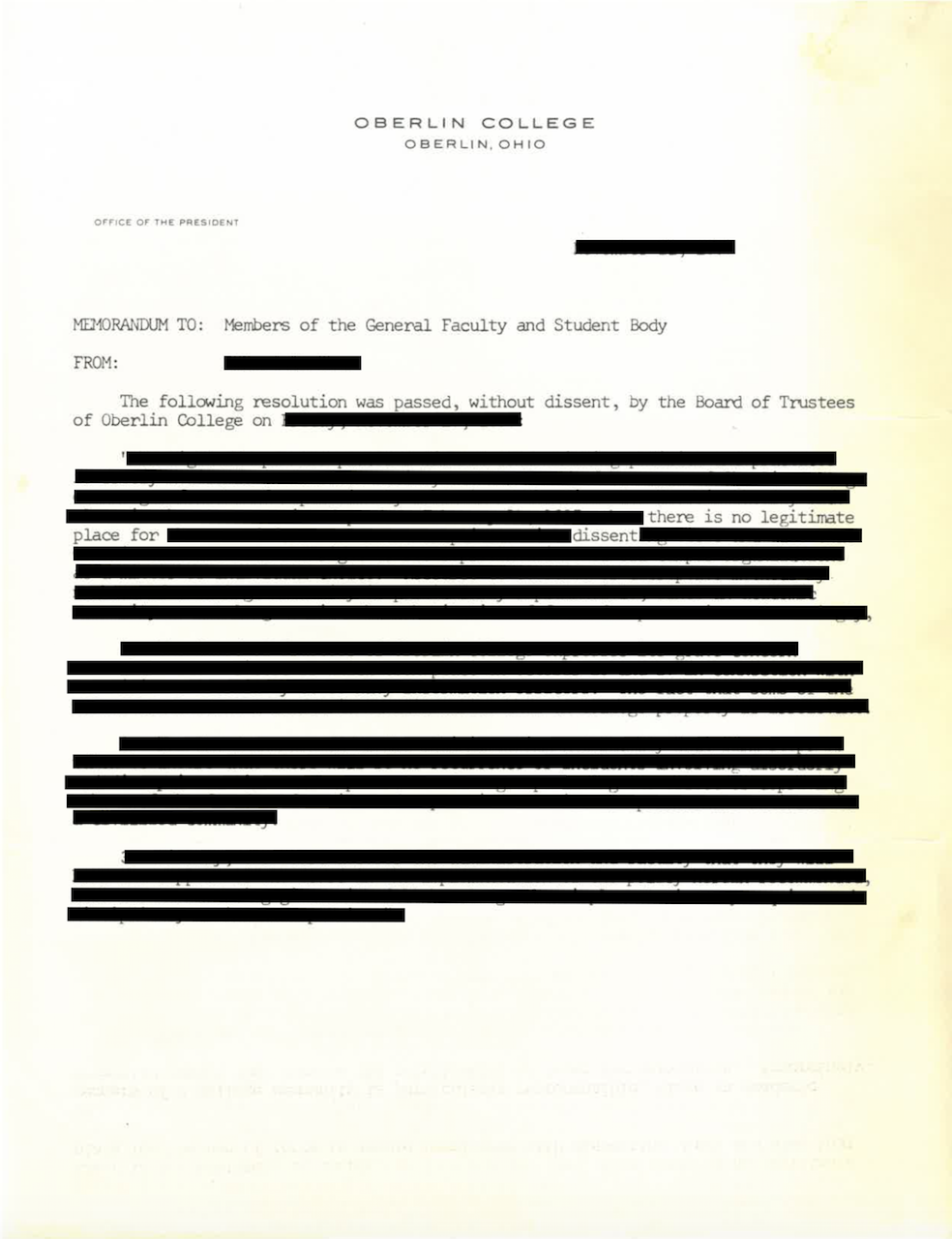
While the highlighting of heavily redacted government documents has been central to surveillance art and studies, our project engages with redaction from a more creative standpoint. The documents we have chosen to redact range from 1967 to 1981. Some read as illegible, marked heavily to obscure the who/what/where of their contents. Others, read like poems, weaving together selected words and themes to highlight hidden or counter-meanings. In both cases, the emphasis on redaction forces the reader to think complexly about what they are looking at, what they think they should be reading, and the meanings produced after reading the redacted texts.
“...the right to look is not censorship, then, but “visuality,” that authority to tell us to move on, that exclusive claim to be able to look” (Mirzoeff 1-2).
The Oberlin Archive, while being an amazing resource for students and members of the college, has its limits. As we searched for documents relating to surveillance, the documents selected were filtered through a pull-and-organize system. The final folders of documents collected covered topics of Security, Campus Protests, and Oberlin College’s “No Trespass List”. In an attempt to counter the institutional framing of these documents, we have reorganized selected documents along new topic areas that engage with surveillance more critically. The documents discussing alternative policing, were highlighted and organized to show the ways that student’s become agents of the school’s surveillance agenda. The documents gain new meaning when recontextualized by our sorting. More importantly however, this process of recontextualizing helped our group participate in a counter-visual process, in which we reasserted the right to view documents under our frames.
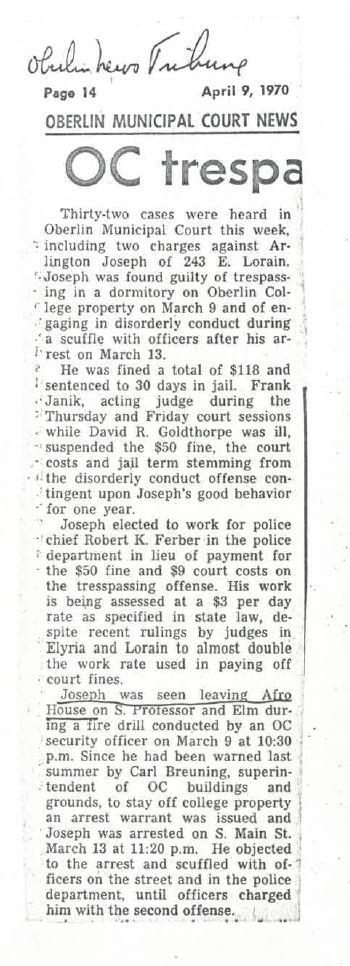
(1970) Oberlin newspaper article describing recent trespassing on campus property.
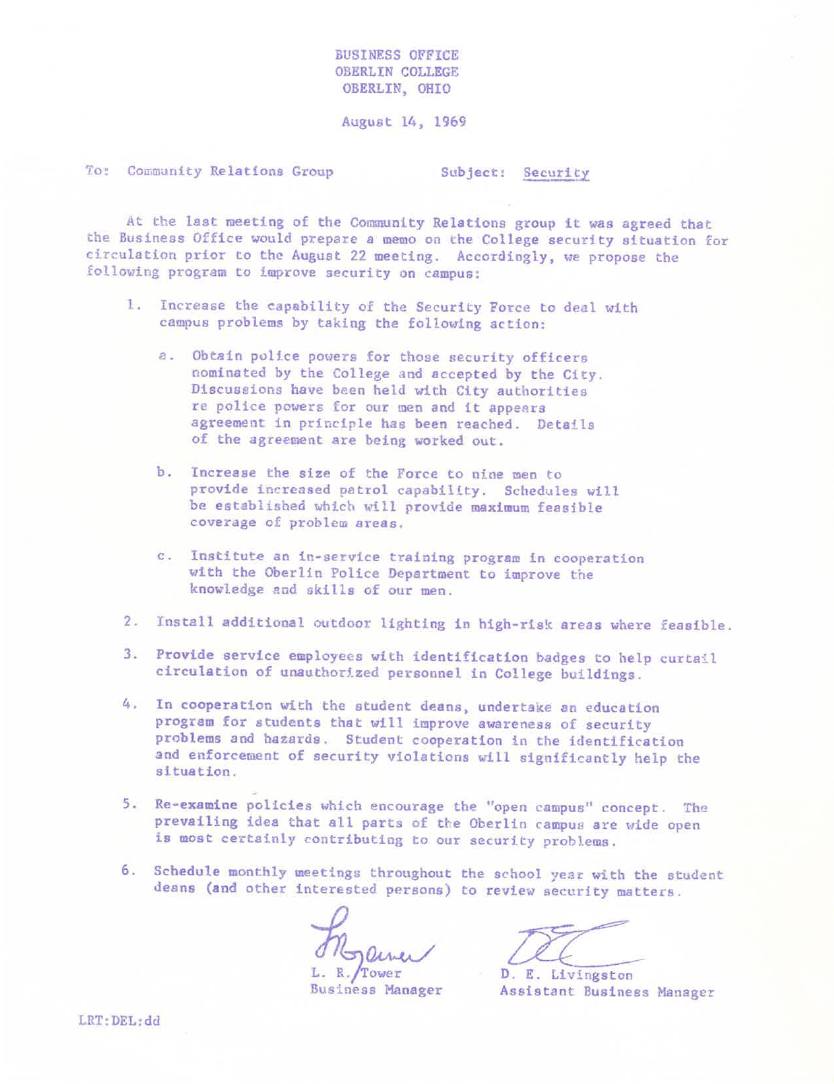
(1969) A proposal to increase campus safety and security measures.
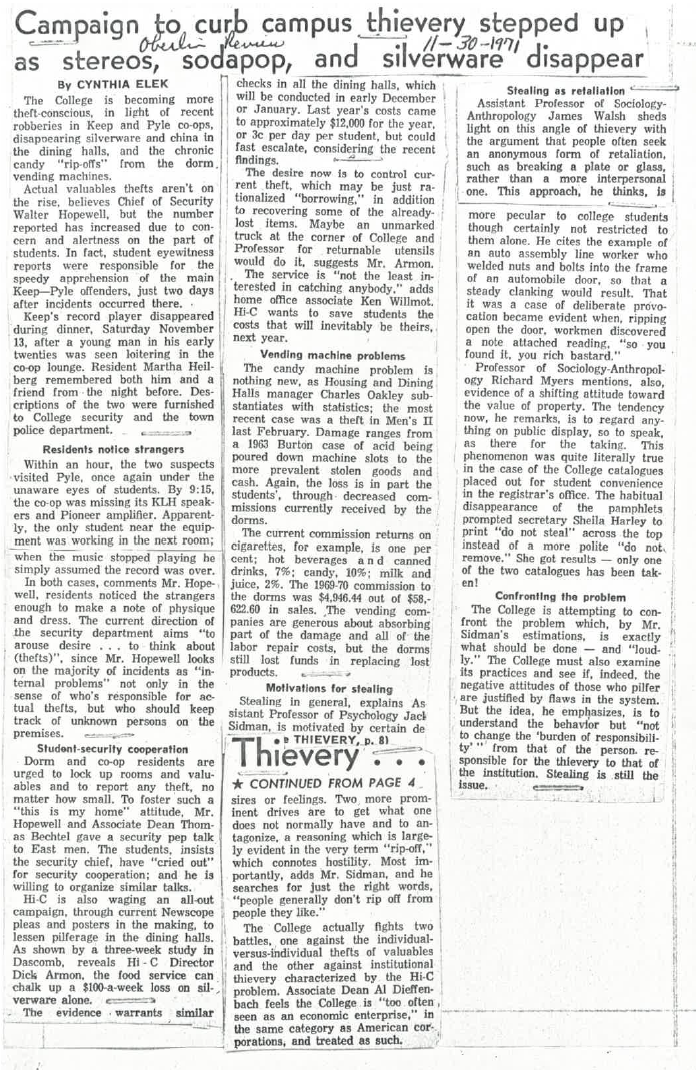
(1971) Oberlin newspaper article outlining new campaign to halt campus thievery.
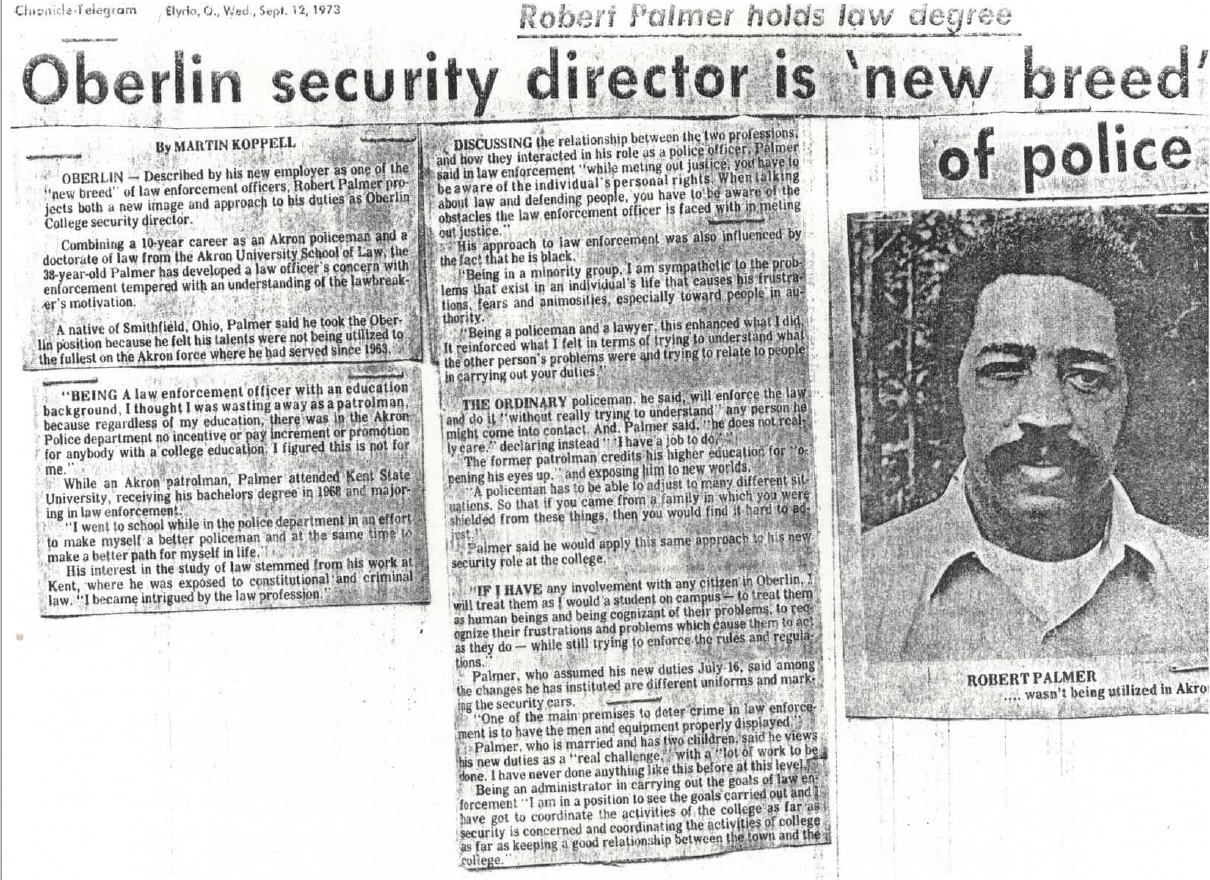
(1972) Oberlin newspaper article describing the “new breed” of police being hired locally.
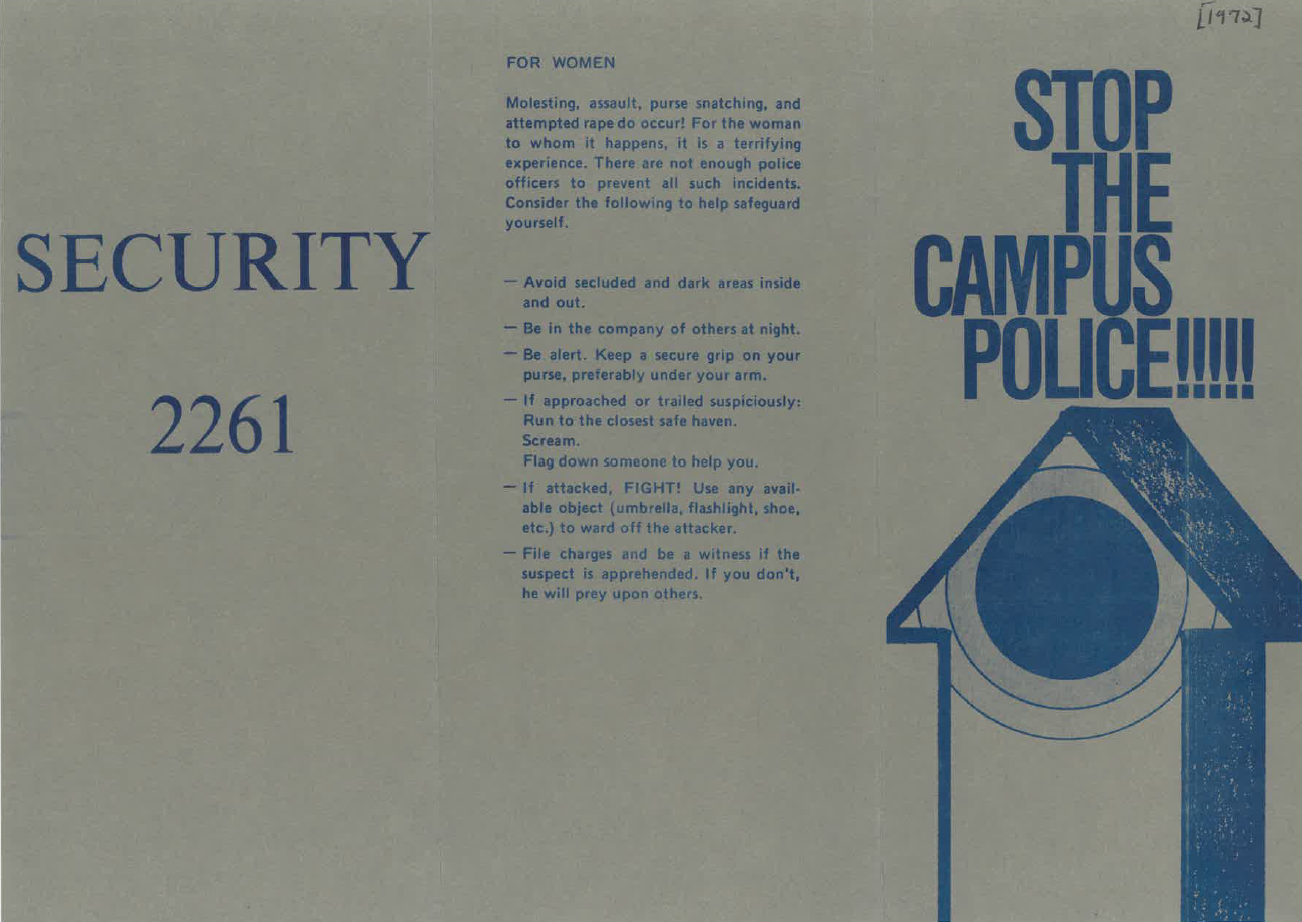
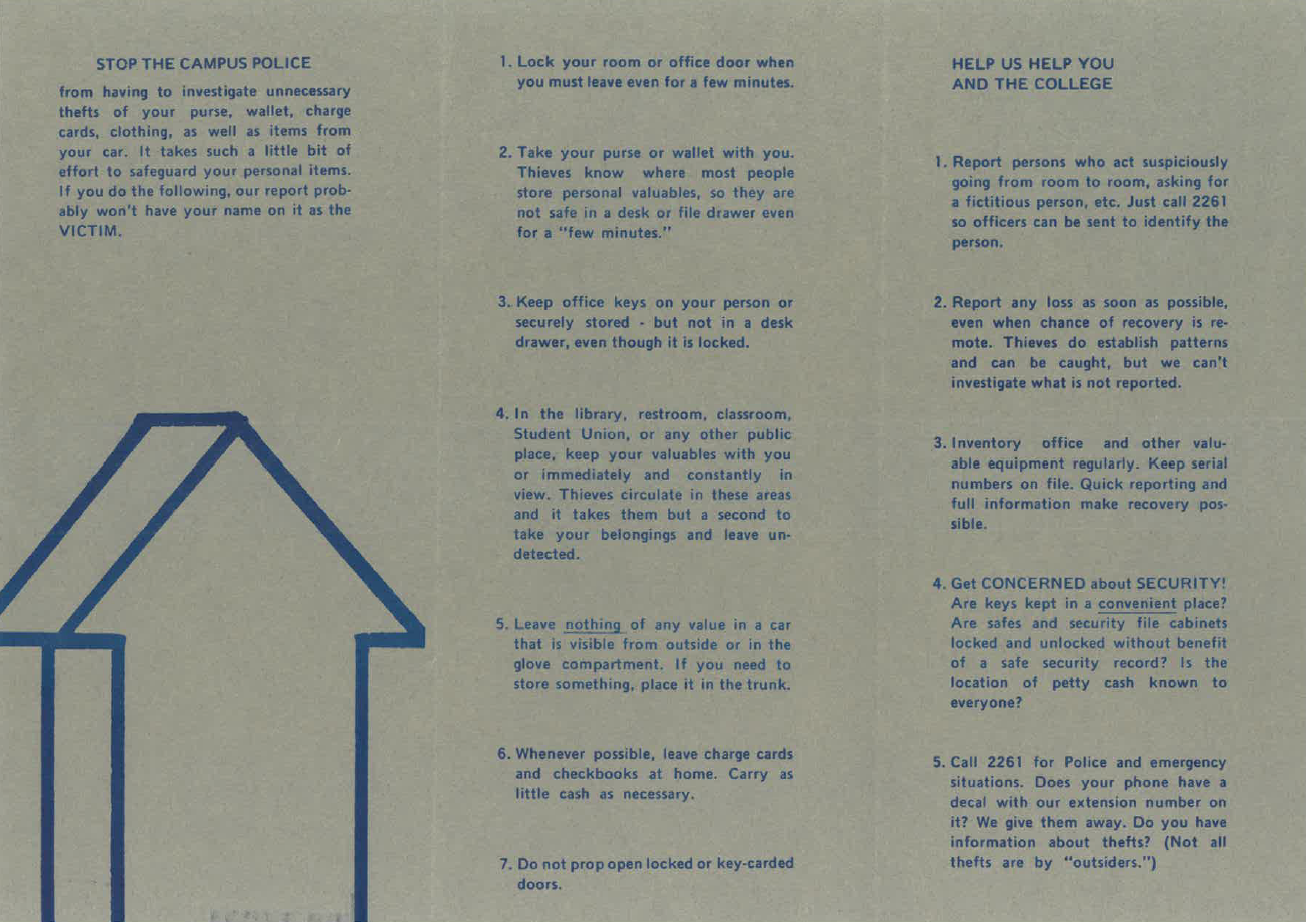
(1972) Pamphlet issued by campus Safety & Security urging students to be responsible and safe.
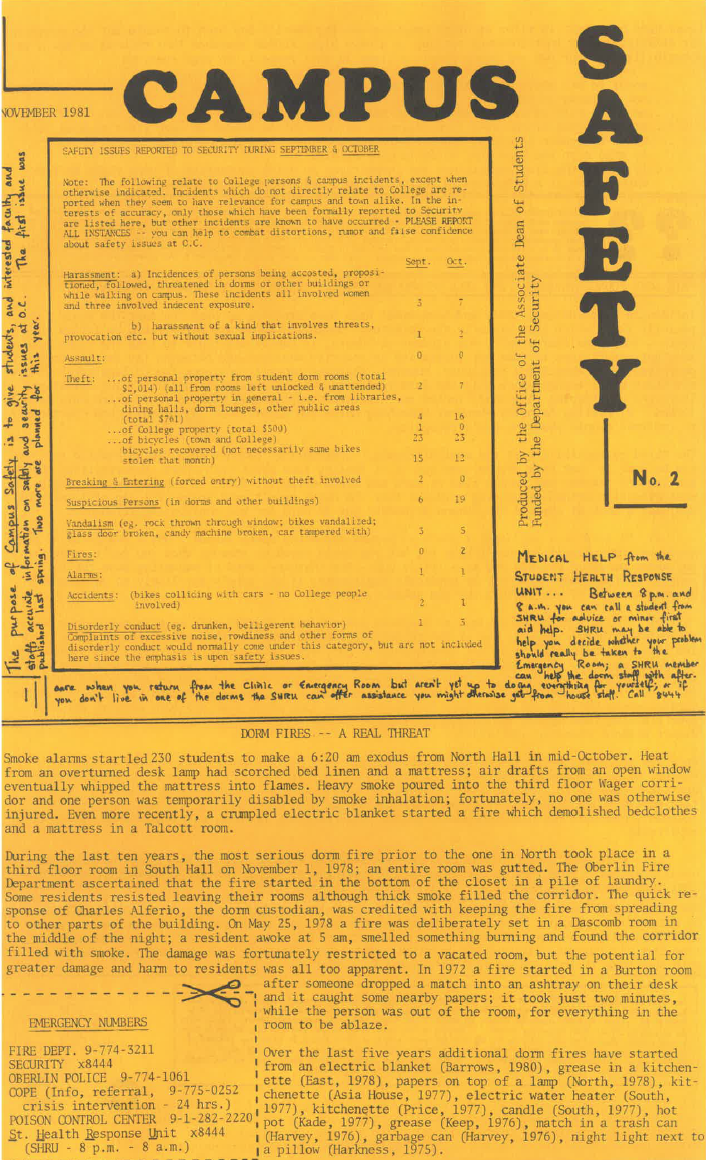

(1981) A list of safety issues reported to Safety & Security during the months of September and October.
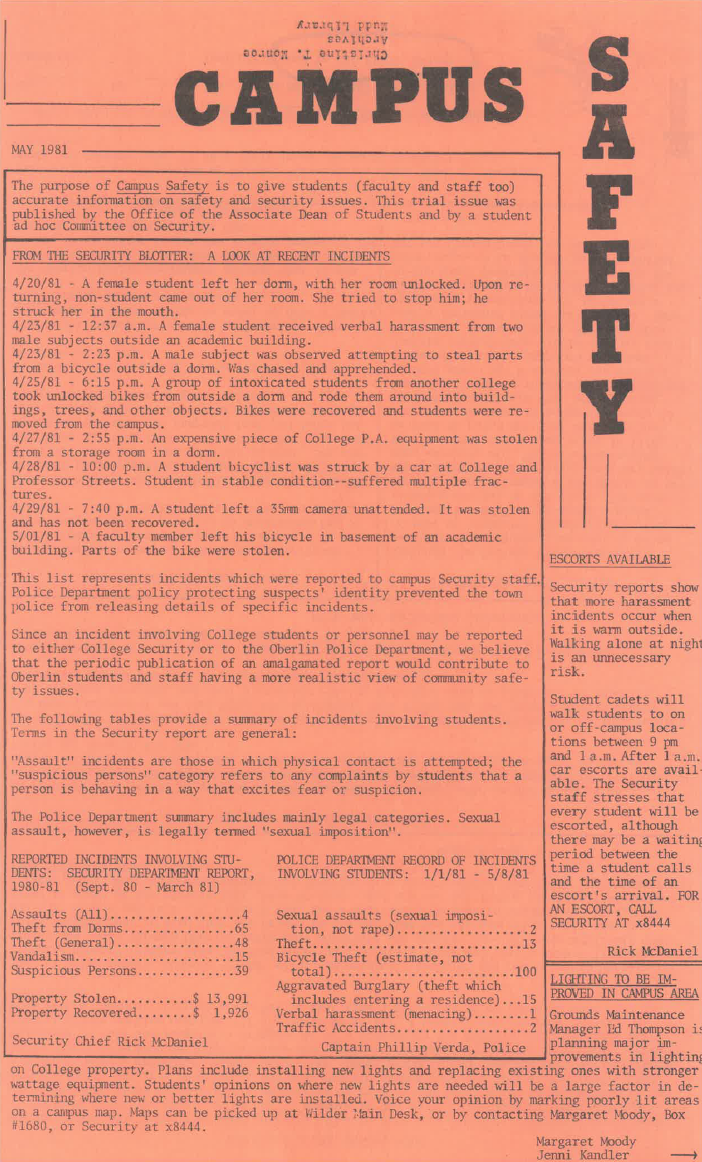
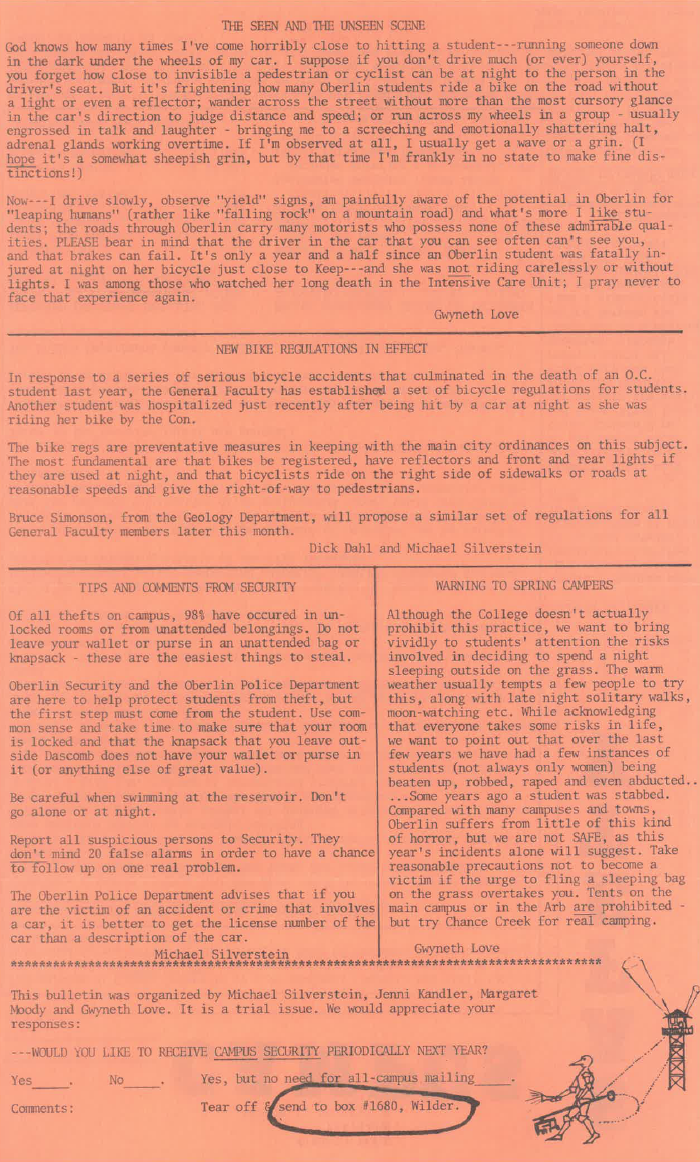
(1981) A list of recent security reports sent to Safety & Security.
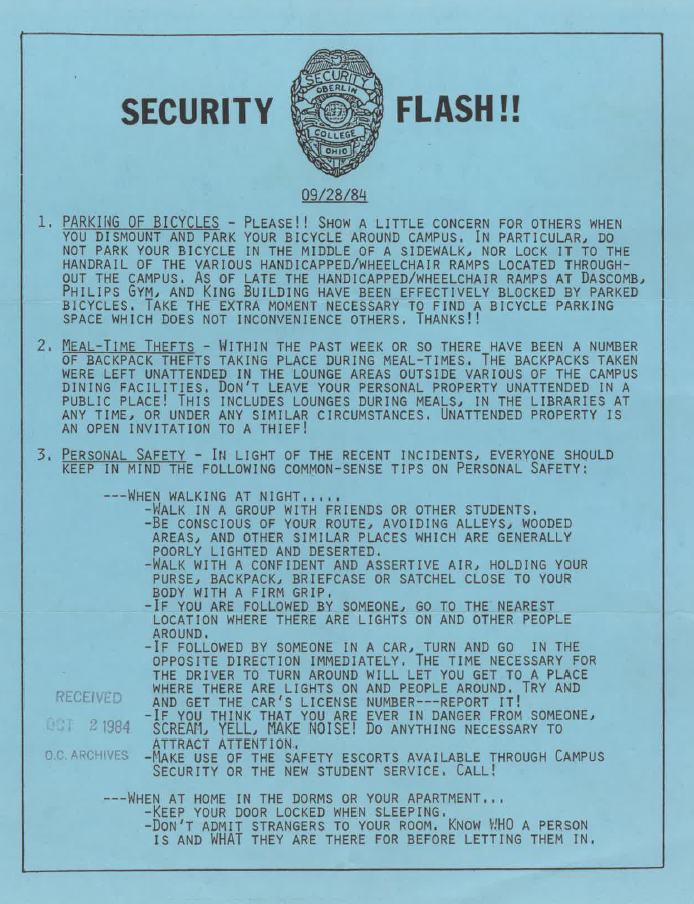
(1984) Security statement issued by Oberlin College Safety & Security.
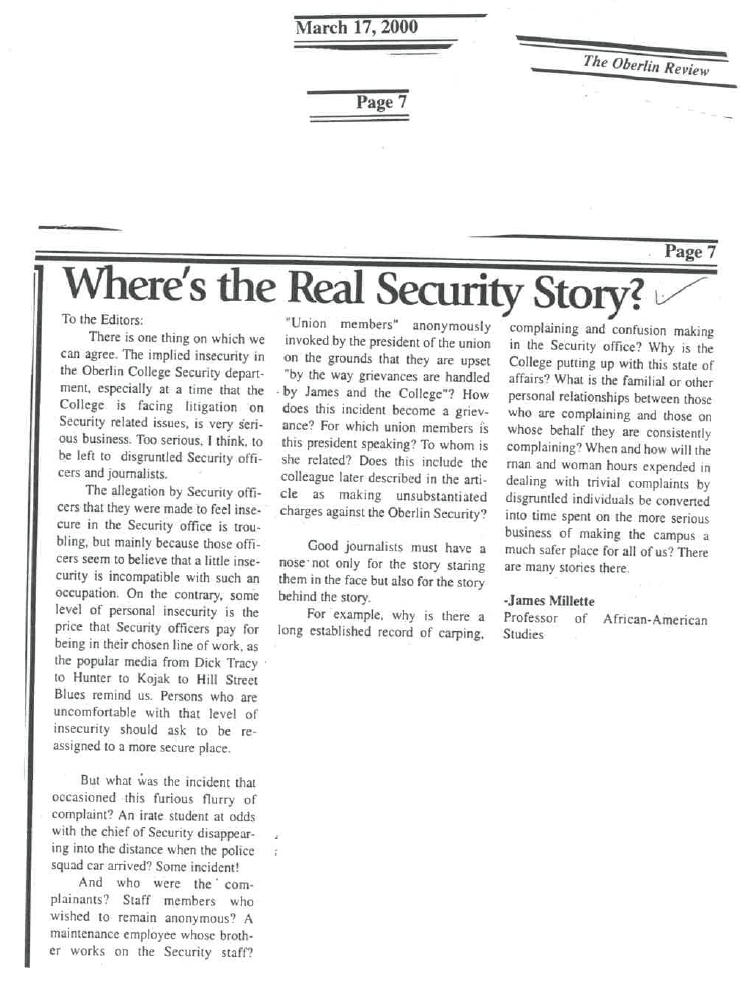
(2000) Oberlin Review article by African-American Studies Professor James Millette calling for more transparency from campus security team.
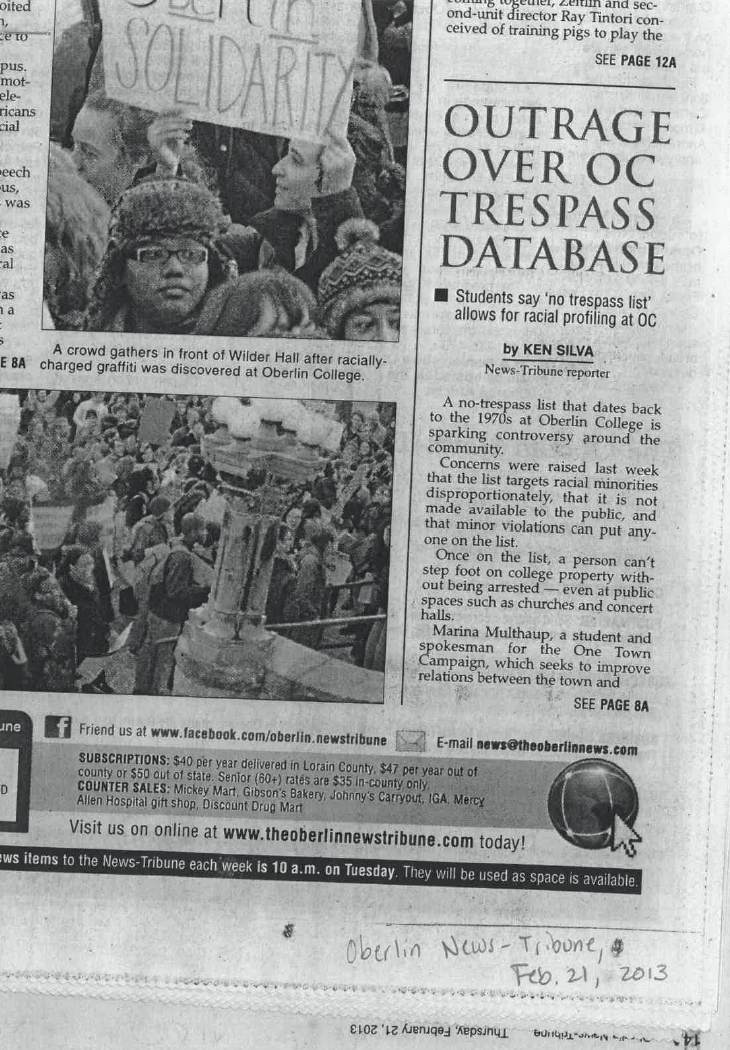
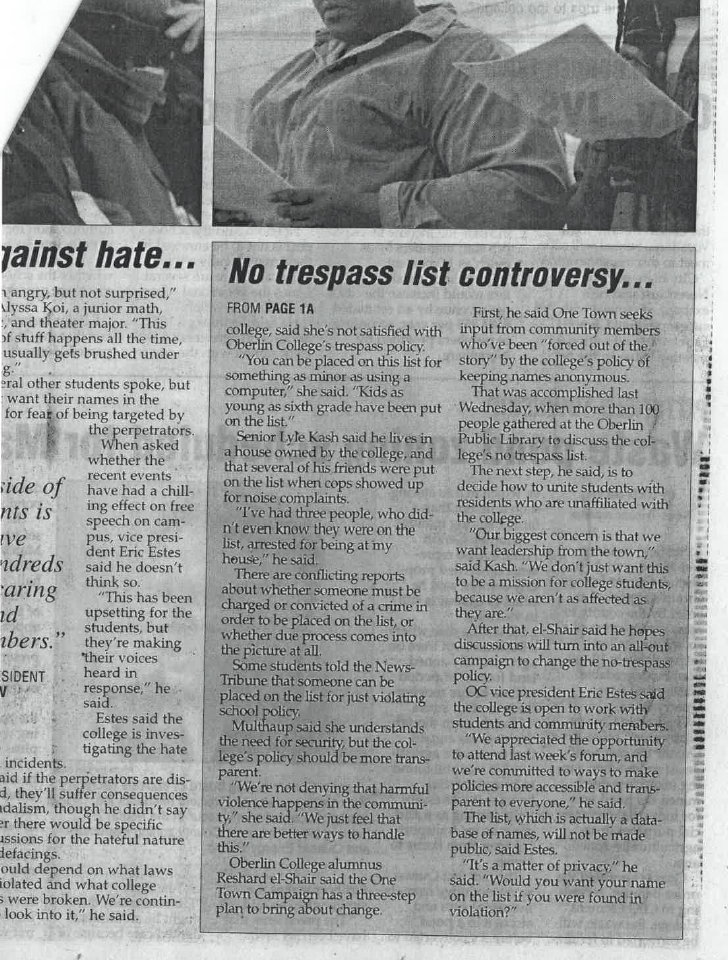
(2013) Oberlin News Tribune articles explaining the controversy of the no trespass list.
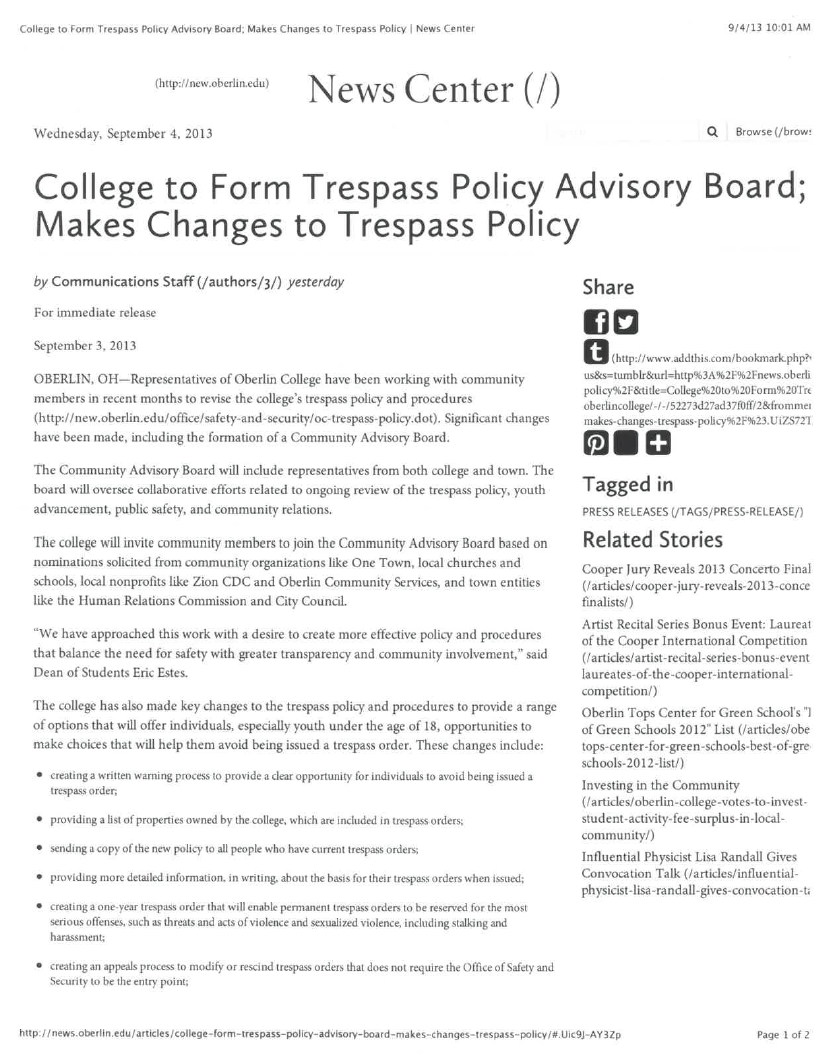
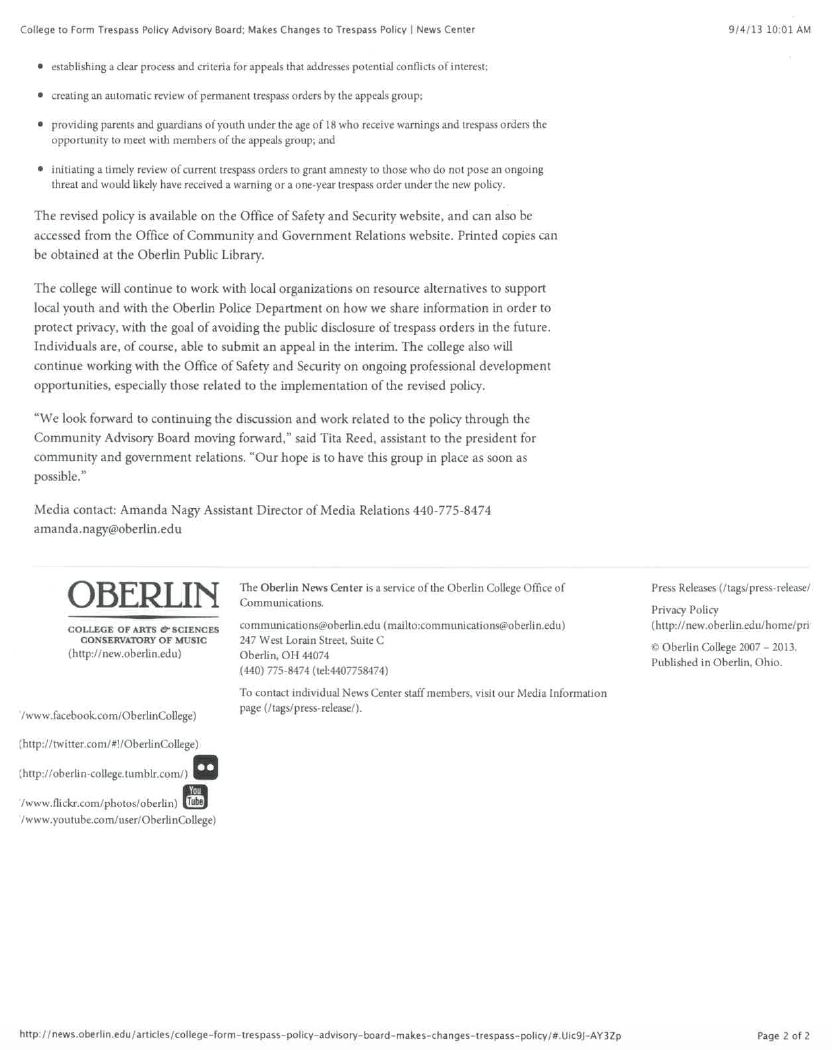
(2013) Revision of trespass policy and notification of formation of the Community Advisory Board.
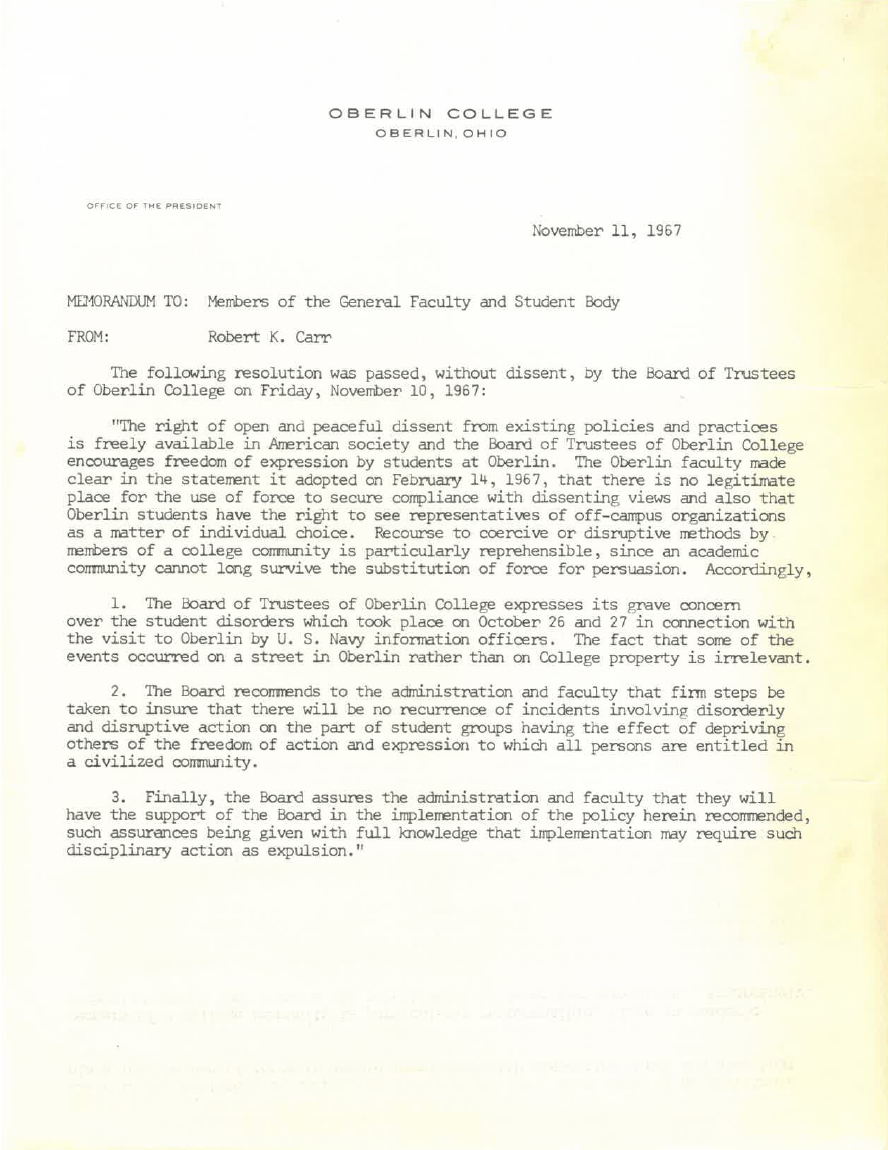
(1967) President Carr and the Board of Trustee’s written response to the student protest against U.S. Navy recruiters.
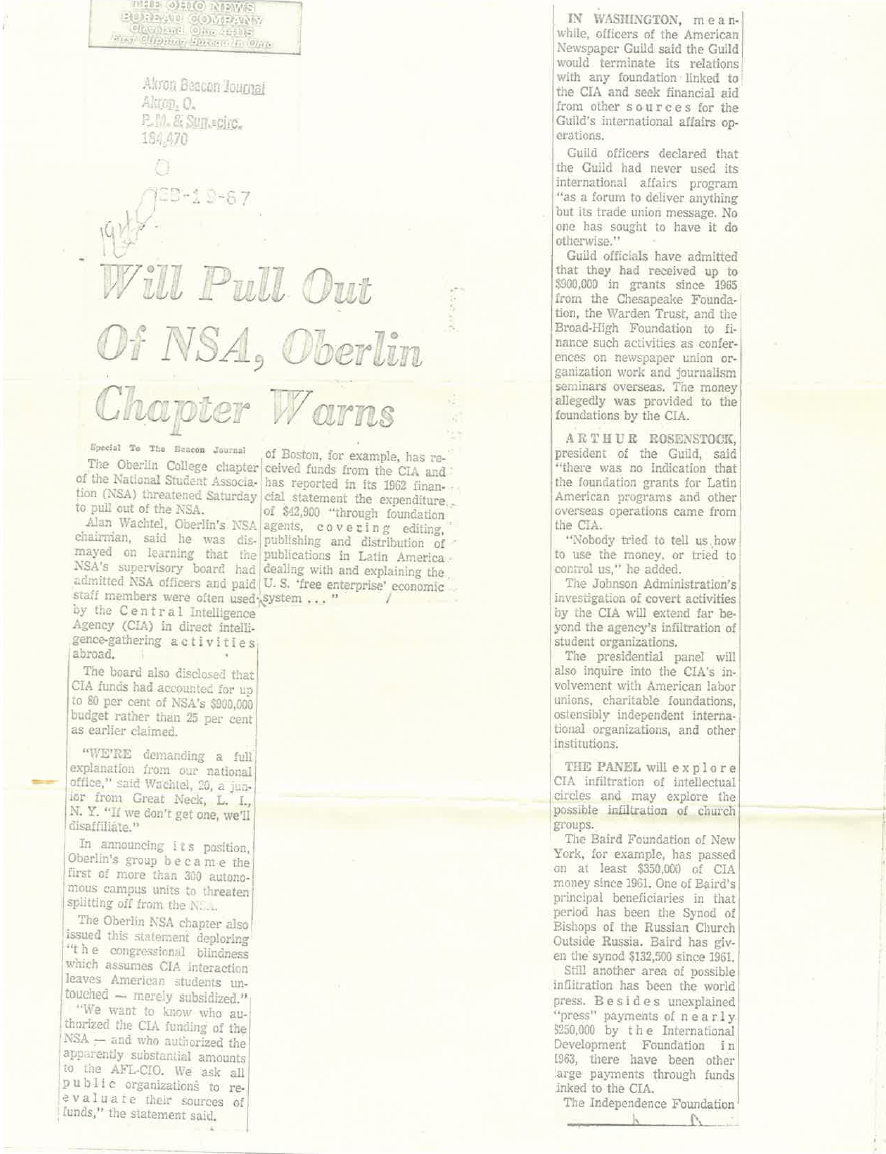
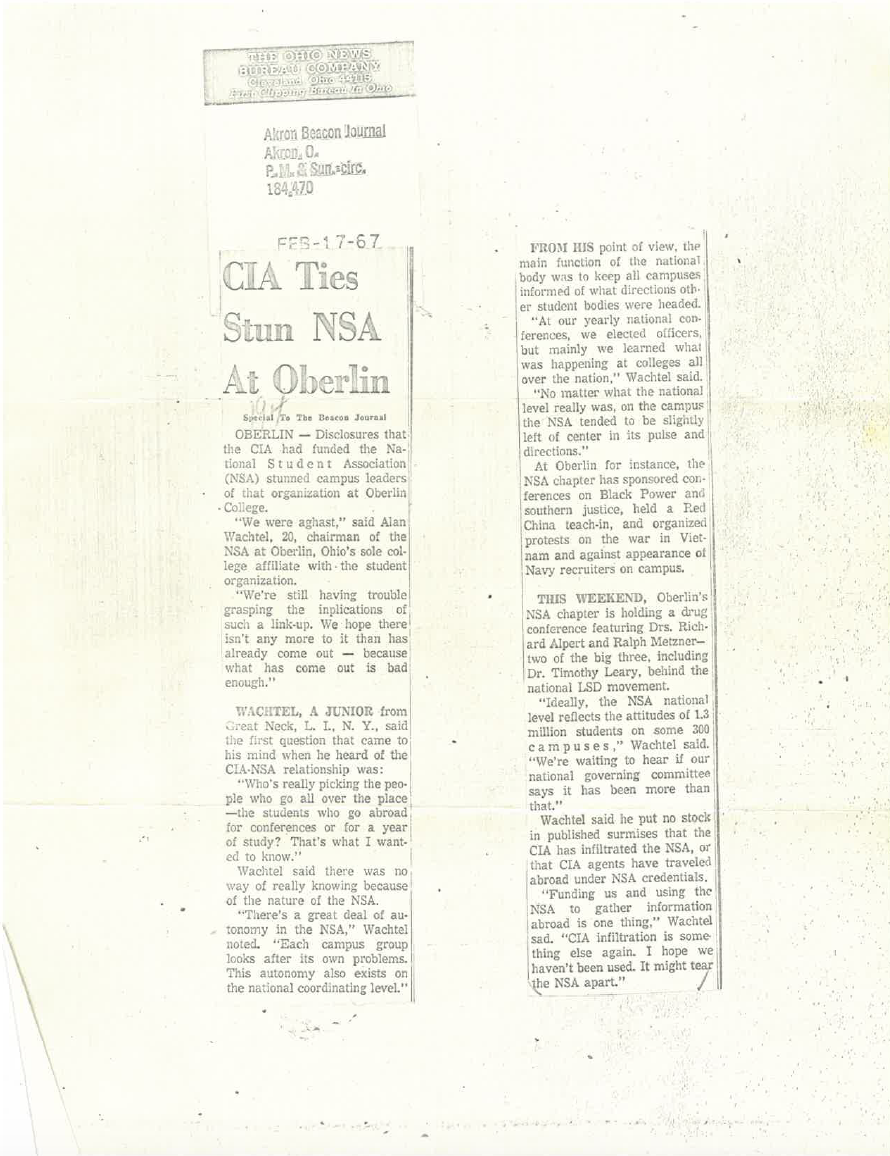
(1967) Reports surface that the C.I.A. has infiltrated the National Student Association (NSA) at Oberlin College. Members of the Oberlin NSA chapter subsequently threaten to pull out.
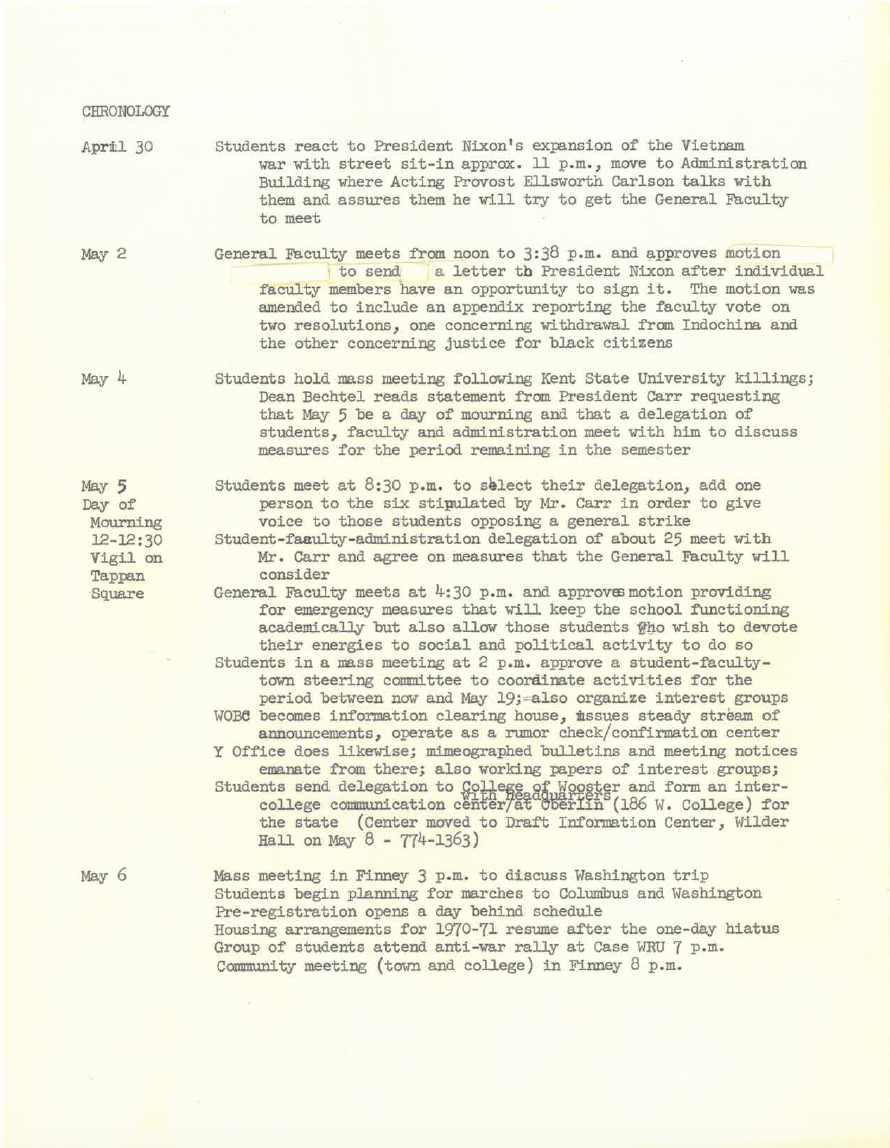
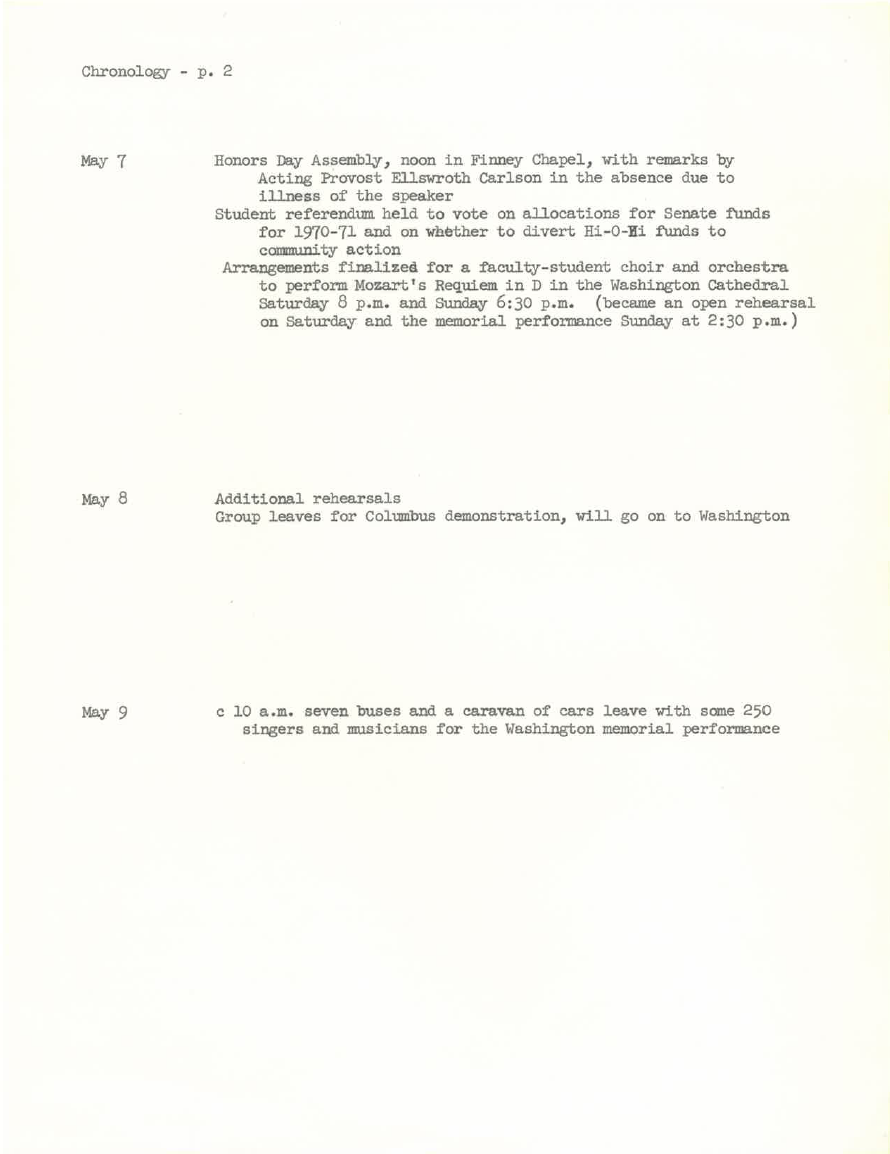
(1970) - Timeline of student, faculty, administrative, and community demonstrations and actions in late April and early May, around the time of the Kent State shootings.
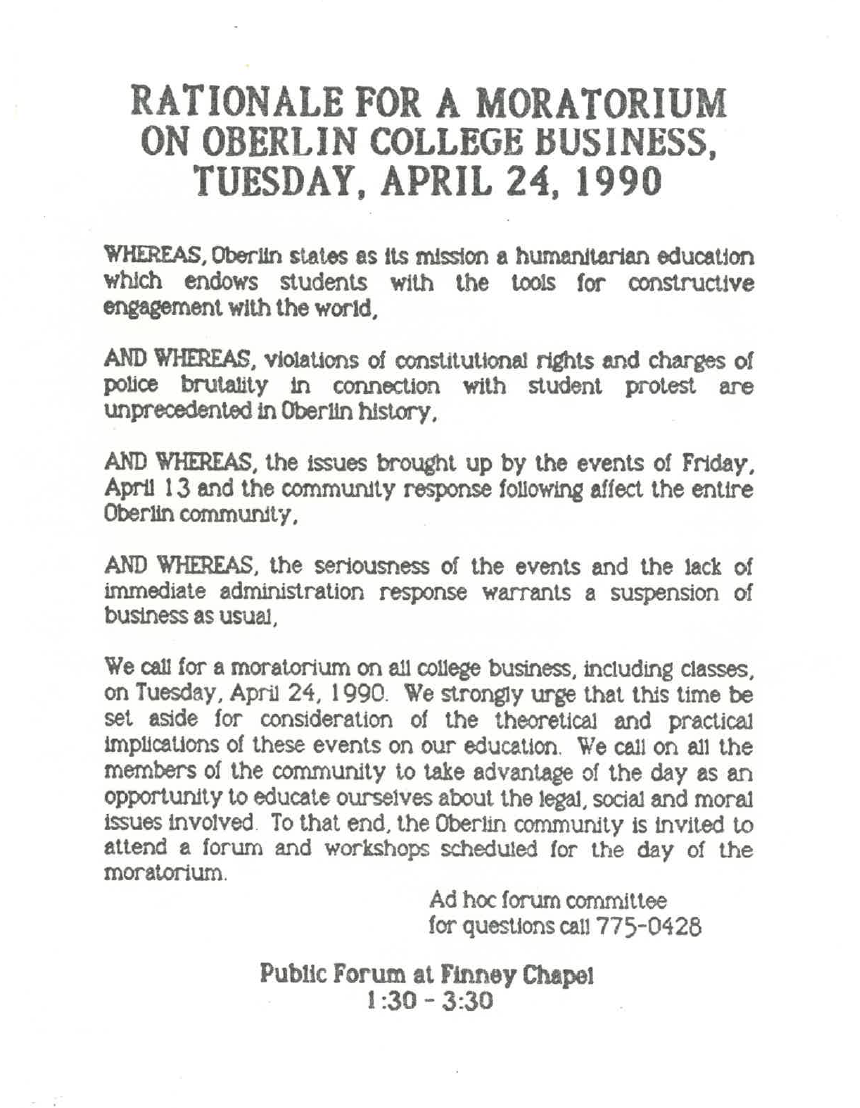
(1990) Students call for a moratorium on Oberlin College business, including classes, following a major protest.

(1990) Following the arrest of several Oberlin students by Oberlin College police at a protest, President Starr proposes a meeting with student protestors, college deans, and security staff from the college to prevent future clashes from occurring.
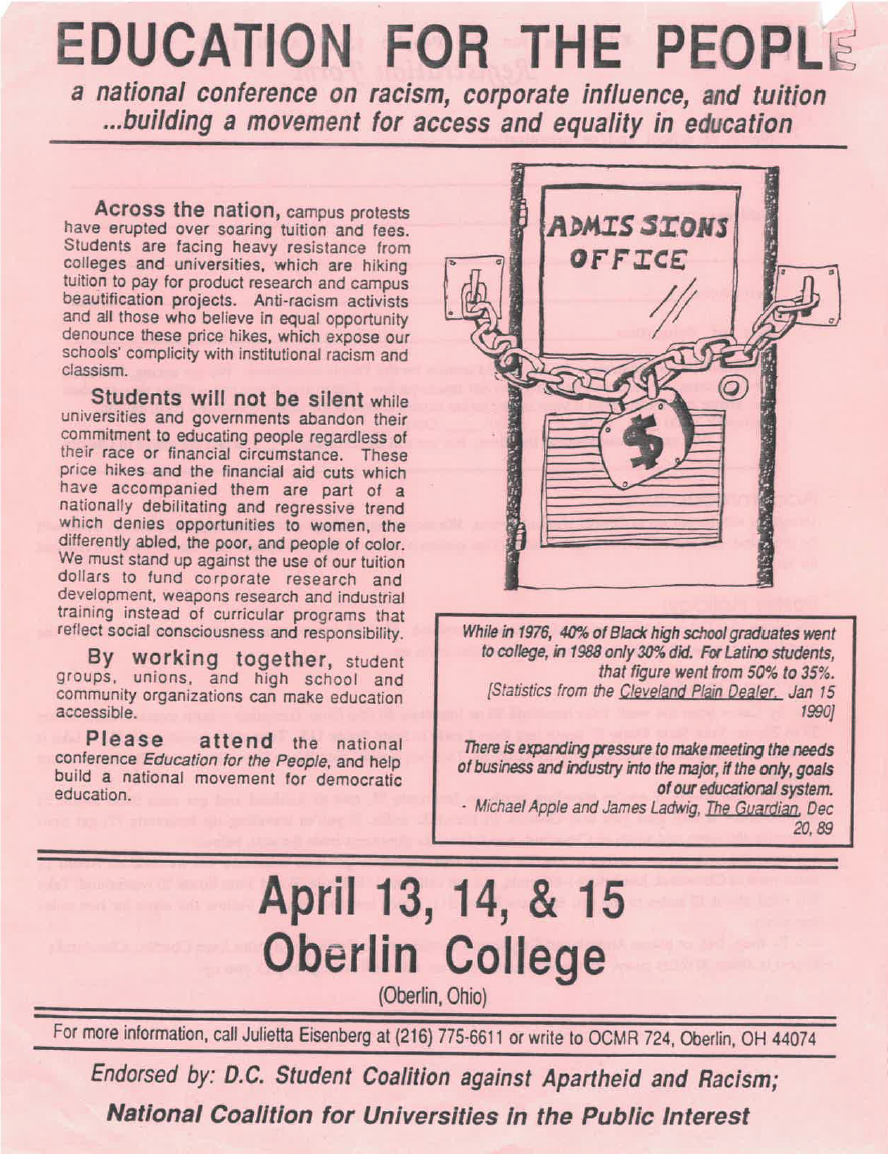
(1990) A poster for a national conference on campus coalition and movement building.
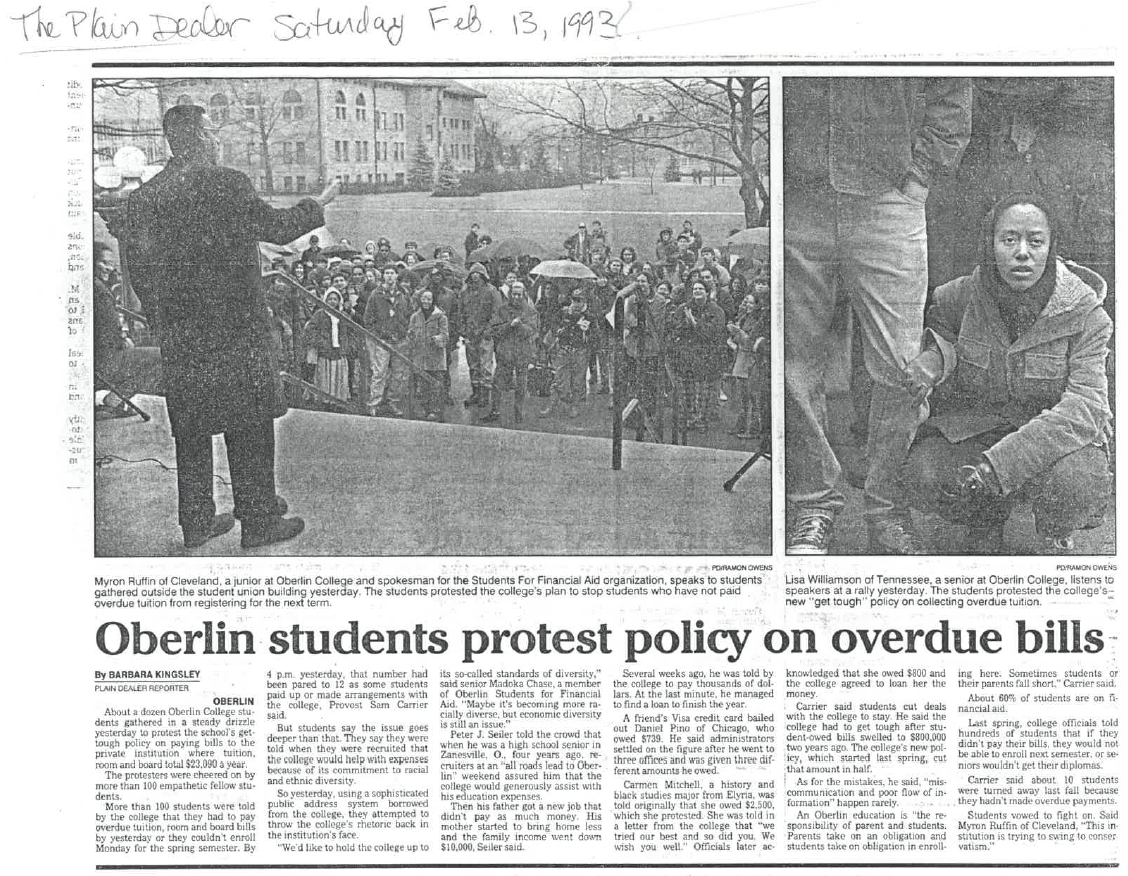
(1993) - Oberlin students push back against policies penalizing students for overdue term bills.
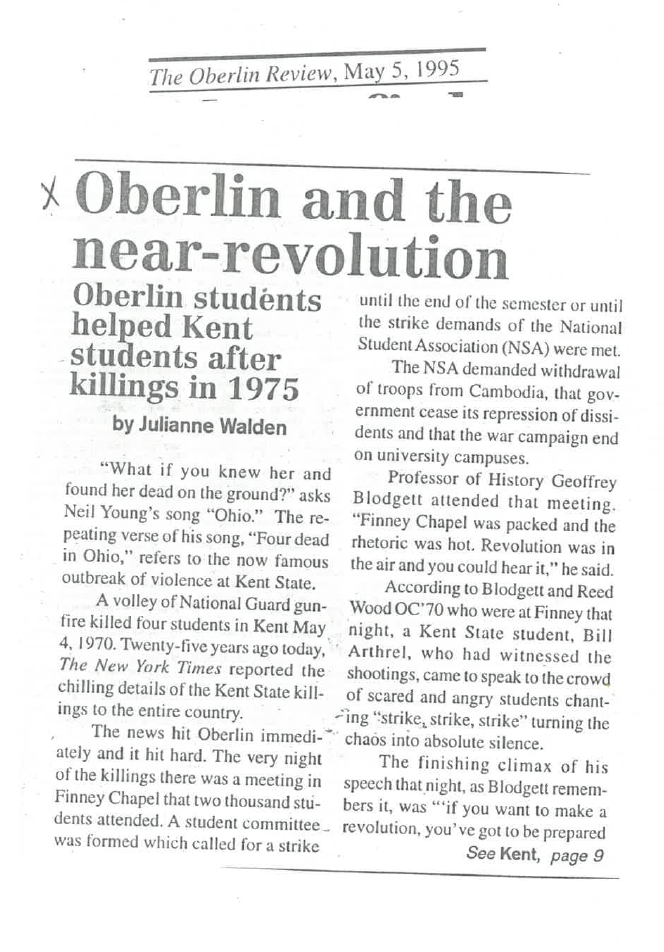
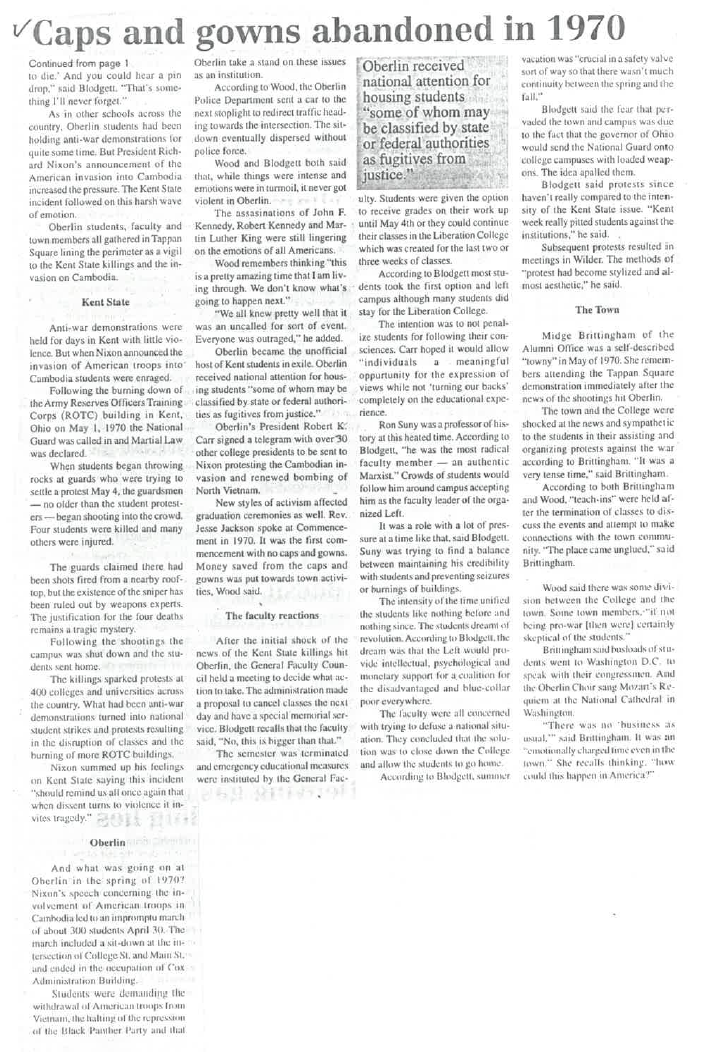
(1995) Newspaper article describes Obelrin campus reactions to the Kent State shootings in 1970, in an attempt to capture the emotional fallout of a politically tumultuous period.
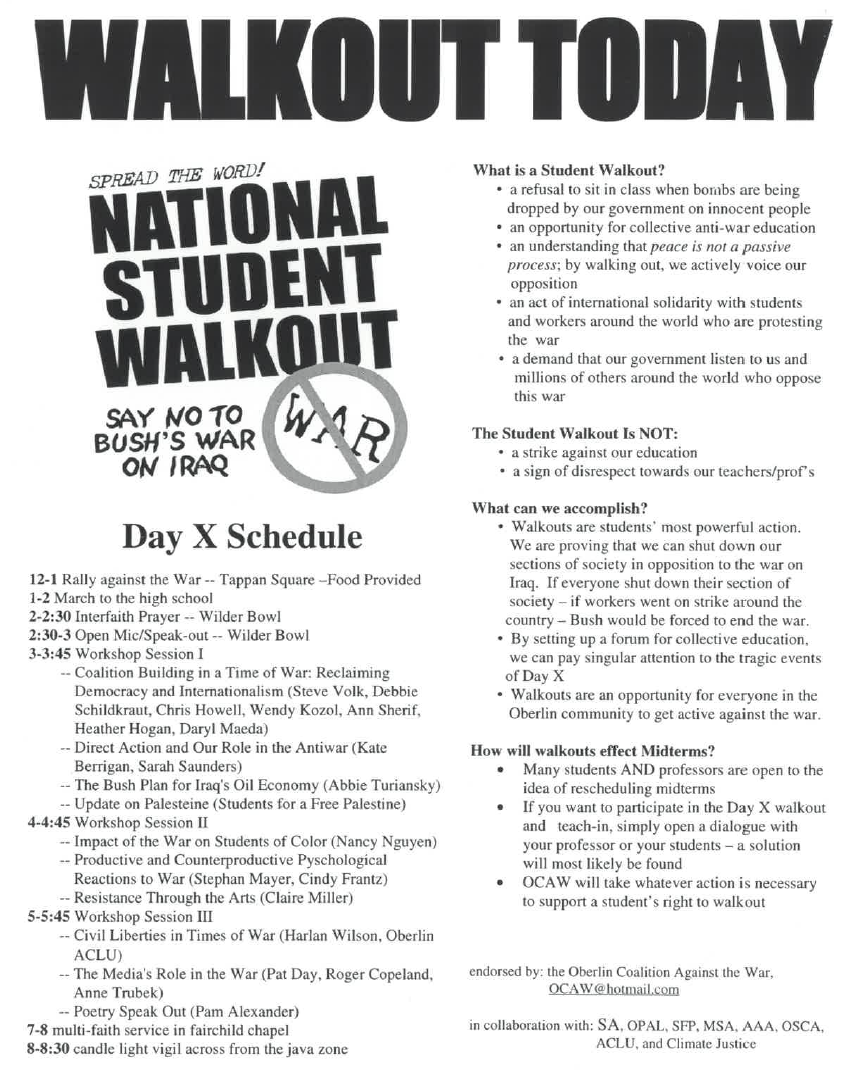
(2002) - Schedule and objectives of the National Student Walkout to protest the Bush administration and the Iraq War.
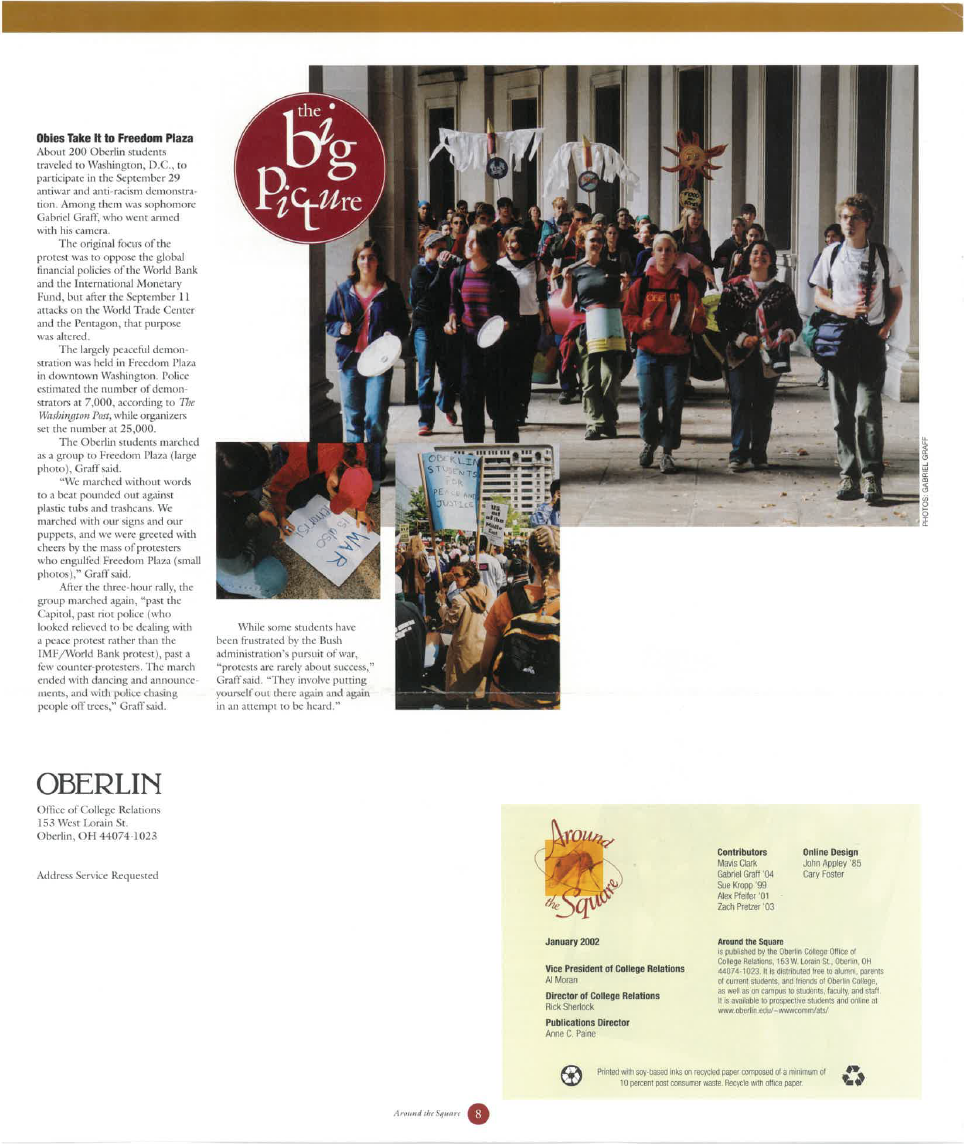
(2002) Two-hundred students participate in a peaceful march on Freedom Plaza in Washington D.C. to protest Bush and the war in Iraq.
Work Cited:
1. Mirzoeff, Nicholas. An introduction to visual culture. Psychology Press, 1999.
2. Nath, Anjali. "Beyond the public eye: On FOIA documents and the visual politics of redaction." Cultural Studies? Critical Methodologies 14.1 (2014): 21-28.
We encourage all Oberlin residents and students to visit the archive and investigate for themselves. Visit the Oberlin Archive's website to see current hours of operation, view digital collections, or make an appointment to speak with a researcher.